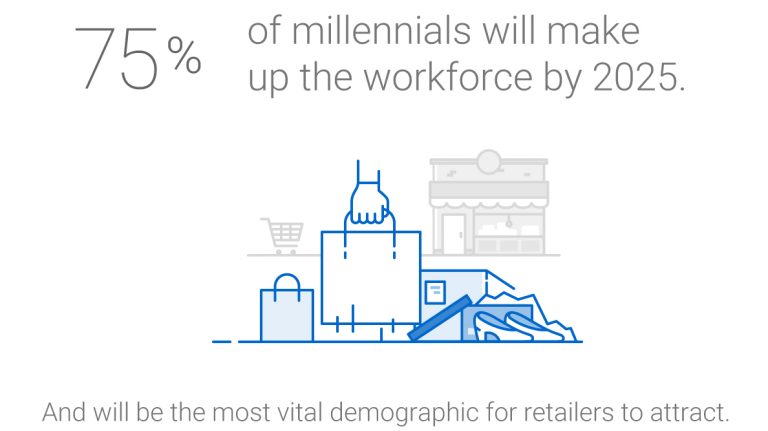The millennials, Gen-Xers and boomers are the three main cohorts of Canadian consumers. New research into their media habits and preferences revealed some unexpected similarities – and the revelation that life stages had a big influence. Life stages such as home ownership, career maturity, marital status and parenthood create more similarities in consumer attitudes and behaviors than age.
Millennials for marketers
Millennials are being hailed by marketers as the largest consumer generation in history. Here’s the big picture:
- There are roughly 9.8 million millennials in Canada
- Millennials make 33% of Canadians’ online purchases.
- They are the biggest generation in the Canadian workforce, making up roughly 35%.

Source: World Economic Forum
So the big question on most marketers’ minds is, how do I attract them? Millennials were the first generation to grow up immersed in digital technology, so most marketers believe email and digital advertising is the best way to break through to them. Digital channels are important when it comes to reaching out to them, but research suggests that a digital-only approach may not be the most effective way to connect. Millennials seem to have an uncharacteristic appreciation for physical channels, which might explain why Canada Post ranked number six with millennials for research firm Leger’s annual ranking of Canada’s most admired companies.
Learn more about how to amplify your marketing mix by generation and lifestage in our free e-book Generation Gap.
Get e-bookDirect mail should be in your millennial marketing strategy
Direct mail might not be something you are considering adding to your millennial marketing strategy, but it should be. Here are a few compelling reasons why you should incorporate it into your next campaign.
Millennials’ inboxes are full
Millennials are bombarded with advertising from every angle online, and they’re not amused. In fact, they’ve become highly efficient at weeding out unwanted marketing. A whopping 46 per cent of them use ad blockers on their desktop – 17% use them on their mobile device, and 14% use them on both their desktop and mobile device.
Their mailbox isn’t
Sending direct mail creates an opportunity for your brand or business to be welcomed into the homes of millennials. Despite what you might think, they value it. In fact, most of them pay attention to it, almost all of them think it’s reliable, over half of them have made purchases based on direct mail offers – and the majority of them like receiving it.
Millennials pay attention to direct mail
Millennials are more responsive to direct mail than older generations. They are more likely to scan it, less likely to discard a piece without reading it, and tend to organize and sort what they get. They also take more time to read the mail, and enjoy showing what they receive to others.
Digital mail and direct mail work better together
Canada Post conducted cutting edge Neuromarketing research that revealed that direct mail and digital are stronger together. When paired with digital advertising in integrated campaigns, direct mail optimized consumer action, emotional engagement and brand recall.
People paid 39% more attention to integrated direct mail and digital campaigns than to single-media digital campaigns, and consumers had 40% higher brand recall when direct mail followed email.
Better brand recall improves the odds that a customer will trust a particular company, associate the brand with a product, and ultimately buy from them.
By reaching out to millennials both digitally and through physical mail, marketers can send a stronger message. This two-pronged approach can increase brand recognition and recall, and garner more attention for a campaign than sending an email alone.
Sending direct mail to reinforce an email campaign targeted to millennials is a great way to ensure that your email actually gets opened. The recipient will be more likely to recognize your brand, and therefore more inclined to open and read what you send.
Amplify your marketing mix
For more expert insights into generational media habits to connect and engage with millennials, read the free e-book Generation Gap.
Get e-book